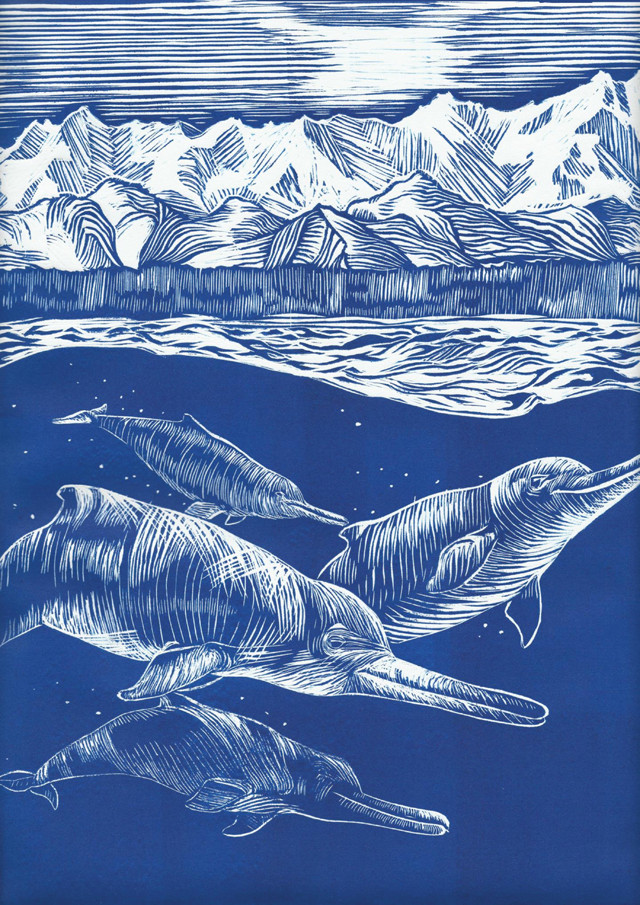
by Mary Caperton Morton Tuesday, November 15, 2016

Artist's depiction of a pod of Arktocara yakataga swimming offshore of Alaska during the Oligocene about 25 million years ago. Credit: Linocut print art by Alexandra Boersma.
Freshwater river dolphins are one of the most compelling — and endangered — branches of the cetacean family tree. Now the discovery of a new species of extinct river dolphin found in the fossil archives of the Smithsonian’s National Museum of Natural History is shedding light on the dolphin family tree, as well as the origins of the highly endangered South Asian river dolphin.
The fossil, a partial skull about 22 centimeters long found in 1951 in southeastern Alaska, has been identified as a new genus and species: Arktocara yakataga, which lived in subarctic marine waters about 25 million years ago. By comparing the shape of the skull to other species of dolphins, both living and extinct, researchers revealed that the specimen is related to the South Asian river dolphin Platanista, the sole surviving species of a once large and diverse group called Platanistoidea.
The South Asian river dolphin — divided into two subspecies: the Ganges river dolphin and the Indus river dolphin — is a unique cetacean in that it’s completely blind and navigates solely using echolocation. Only a few thousand individuals are thought to remain in the murky rivers of Nepal, India, Pakistan and Bangladesh, making the animal elusive to study for conservation purposes.
“One of the most useful ways we can study Platanista is by studying its evolutionary history, by looking at fossils that are related to it to try to get a better sense of where it’s coming from,” said lead author Alexandra Boersma, a research student in co-author Nicholas Pyenson’s lab at the Smithsonian, in a statement released with the study, published in PeerJ. “Exactly how that once diverse and globally widespread group dwindled down to a single species in Southeast Asia is still somewhat of a mystery,” Boersma said, “but every little piece that we can slot into the story helps.”
© 2008-2021. All rights reserved. Any copying, redistribution or retransmission of any of the contents of this service without the expressed written permission of the American Geosciences Institute is expressly prohibited. Click here for all copyright requests.